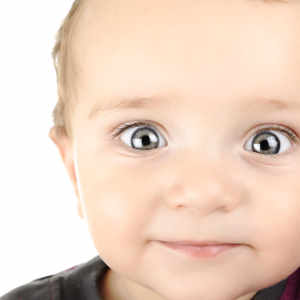Unilateral RB

Your eye doctor has diagnosed a cancerous tumour known as retinoblastoma in one of your child’s eyes. If there is no history of RB in the family, then the condition is known as Unilateral Sporadic RB. Usually by the time that this form of RB is diagnosed, the tumour in your child’s eye is very large and they have been without useful vision in that eye for some time.
Enucleation
The commonest type of treatment in Unilateral Sporadic RB is removal or enucleation of the affected eye. The reasons for performing enucleation in this form of RB include:
- The tumour inside your child’s eye is too large or extensive to safely control with eye saving treatments, such as chemotherapy or radiotherapy.
- There is no hope of preserving vision in the affected eye.
- Leaving the eye in place may threaten the life of your child.
The thought of your child needing to have one of their eyes removed is a devastating experience for any parent. Under the circumstances, it is important for parents to try and concentrate on a few key points:
- Treatment of RB is the most successful of all the childhood cancers. In Unilateral Sporadic RB, removal of the affected eye alone results in a cure for the majority of children with this condition.
- By the time a child is diagnosed with Unilateral Sporadic RB, they have often been without useful vision for some time in the eye that needs removal. You probably had not noticed any difference in your child’s visual behaviour prior to the diagnosis and removal of the affected eye will not suddenly make life more difficult for them.
- Most children who have had one eye removed lead a completely normal life, and if the vision in their healthy eye is not affected, should have no difficulty with schooling, driving a car, or enjoying a fulfilling and successful career.
Please follow the “Enucleation” link below for further information regarding the details of this operation, post-operative care and the artificial eye.
Pathology Results
One week following the operation you must return to see your eye doctor to discuss the results of the microscopic examination or pathology of the enucleated eye. Two thirds of children will require no further treatment and can for the most part be considered cured of retinoblastoma. Your child will need to be reviewed by a childhood cancer doctor (paediatric oncologist), who will almost certainly give the “all clear”. Lumbar puncture and bone marrow biopsy are not necessary in children who do not need chemotherapy (see below).
Adjunctive Chemotherapy
Approximately one third of children will require additional or adjunctive treatment in the form of chemotherapy if “adverse pathological features” are noted on microscopic examination of the enucleated eye. The aim of this adjunctive treatment is to greatly reduce the risk of the disease appearing elsewhere in the body.
The chemotherapy regimen usually takes the form of four courses of “triple therapy” (carboplatin, vincristine and etoposide) over the next three to four months. This will be administered by your paediatric oncologist and they will discuss the details and side effects of treatment with you.
Prior to commencing chemotherapy, your child will require a lumbar puncture and bone marrow biopsy. Your paediatric oncologist will discuss the details and risks of these procedures with you.
Follow Up
There is a small (approximately 10%) risk that your child has the genetic or heritable form of retinoblastoma, and so will require ongoing follow up by your eye doctor. Please take the “Follow Up” link below for further information regarding ongoing review of patients who have had Unilateral Sporadic RB.
Gene Testing
Retinoblastoma is due to the presence of errors or mutations in a single pair of genes (RB1 gene) in your child’s genetic make-up or DNA. The RB1 gene normally acts to prevent or suppress tumour growth in the retinal cells.
In Unilateral Sporadic RB, the mutations cause malfunction of the gene in only one retinal cell of your child’s eye and allows a single retinoblastoma tumour to form here. Please go to “RB Genetics” for further information on the genetic basis of RB and the importance of testing for mutations of the RB1 gene in Unilateral Sporadic RB.
